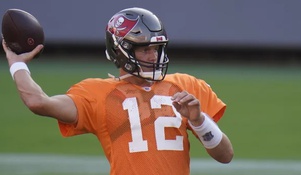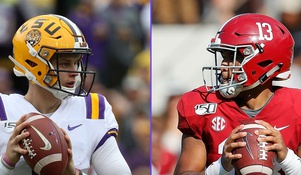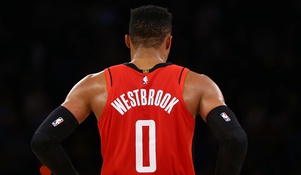The NHL and NBA will adapt their bubbles as the playoffs continue because they need to

On August 12th the NBA announced that they are considering allowing family and close friends of the players into the NBA Bubble to accompany the players. This is a big deal and is important for the NHL to also take note of. The NHL and NBA have both moved their playoffs to one or two locations (the NBA opted for the Orlando ESPN Wide World of Sports Complex, while the NHL selected two “hub” cities in Edmonton and Toronto) and the results have been outstanding as the players have been unexposed to the Coronavirus. As the first few weeks have passed, the NBA is starting to push the limits as they would allow family members and close fans, and the NHL will likely follow suit.
The risk can’t be understated enough. A bubble or hub city requires near perfection and total cooperation and the consequences can become catastrophic. The NBA has to consider the liability that can occur when more people enter the bubble. Aside from a potential outbreak that can result from the cancelation of games, the NBA runs the risk of exposing someone to a life-threatening virus. It would be one thing if the players and NBA employees are in the bubble but once family and friends start to enter the scene, it would involve too many people and too big a risk.
As part of contemplating the dilemma, I reached out to someone who has been dealing with mental health initiatives throughout the pandemic to weigh the pros and cons. “I noticed many people were solely focussed on the problems of today with all of the death and illness but we're forgetting about the long-term damage of tomorrow.” Said Eli Jonah Karls, social media influencer and co-founder of the mental health initiative in response to the global pandemic. Karls created an initiative in response to the pandemic to combat the struggles of mental health, through social media, players and fans started to partake in the Celly Forward Challenge which raised awareness of a struggle that players and fans alike share.
The NBA and NHL should have the least to fear on this front since both leagues have displayed their ability to handle the virus and the testing. The NBA Bubble has numerous checkpoints that many people aren’t aware of, at each checkpoint, they test a player or employees while they quarantine and if the test comes back positive, they can’t reach the next checkpoint. Both the NBA and NHL have shown in the isolation strategy that the players can be tested and quarantined as needed and the results allow the facilities to be rid of Covid-19. Moreover, the bubble has allowed players to leave and come back without much difficulty (Mike Conley was able to leave for the birth of his child and return and still be able to play in the playoffs). The isolation strategy has been effective to the extent that the MLB is considering moving the playoffs to one or two cities with the league not going with the isolation strategy and seeing major setbacks with players testing positive for Covid-19 and teams having outbreaks.
The bottom line is that the NBA is making the right decision. Allowing family, friends, and possibly close fans (the Toronto superfan comes to mind, maybe Spike Lee) is not only something that can logistically happen but it can be vital to the overall health and state of the players. In terms of logistics, as the playoffs progress, more teams will be eliminated, allowing more space in the bubble for family and friends (the hotels that house players can team employees can be available). Those that enter the bubble (and the “hub” cities for the NHL) will follow all the qualifications and guidelines that the players were asked to follow. By the time the NBA Finals roll around, the players can be allowed to potentially have fans considering how effective the bubble has been.
Having friends and family isn’t just important for moral support, it is vital to mental health and stress. Paul George recently admitted that he battled depression and anxiety while in the bubble, making it hard to focus on playing the game he loves. Paul George isn’t an outlier, many players have noticed the struggle of being alone in the difficulty of the bubble. It’s easy to forget how long the players have been alone in the bubble, the league restarted almost a month ago and a team that plays in the NBA Finals will be in the bubble for 3 months. The same can be said about the NHL players, they are dealing with similar isolation, and depression and anxiety can get to them when they can’t see their family or friends for months on end.
There have already been initiatives and programs in place but some fans and players knew they had to go the extra mile. Joe Veleno of the Detroit Red Wings and social media artists, Eli Jonah Karls and Ari Solomon launched the Celly Forward Challenge, a social media initiative promoting mental health among youth during the COVID-19 crisis. The Cellyforward Challenge provided a platform for pro athletes, artists, and influencers to advocate for mental health. Participants such as US & Canada open Champion Bianca Andreescu, Montreal Canadiens forward, Nick Suzuki, and Kirby Dach of Chicago Blackhawks, had accepted the challenge, just to name a few. It also raised funds in support of organizations dealing with the influx of teenagers and young adults struggling with depression or other mental illnesses in the times of Covid-19. In all ways, the players and the fans have made it a priority to not only defeat the Virus from a physical standpoint but also the mental effects that it can strike on anyone.
It’s easy to forget that the players and coaches are human and just like us. They are in superior physical health but just like us, they are experiencing the same effects of a lockdown and a global pandemic. While there have been initiatives to help the players that are battling depression and stress, the leagues have to account for the players with more actions. Allowing family, friends, and even some fans might be the beginning of the support that the players need. The NBA and NHL have made all the right decisions in regards to the player's and employee's health in regards to avoiding Covid-19, now they must consider the next facet of players' health and well-being.





